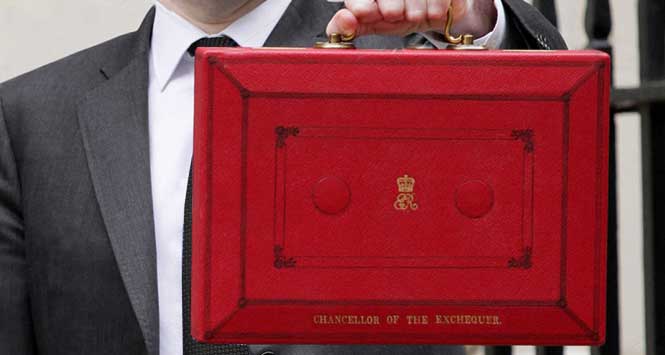The vaping category is enduring tough times, with scare stories from America and the convenience channel’s seeming inability to hold market share, never mind grow it. SLR’s second Cloud Chasing conference, held once again at 200 SVS in Glasgow, set about clearing the fog of confusion that currently surrounds vaping.
by Findlay Stein
In the year since SLR’s first Cloud Chasing event about driving growth back into vaping, the category has seen something of a reversal of fortune – not least for convenience retailers – as the channel lost market share to the multiples’ aggressive pursuit of the pod sector. And vaping in general has suffered from a torrent of negative publicity in the wake of several vaping-related deaths in the US.
The American health scare has been front and centre for the day’s first speaker for several months now. John Dunne, a Director of the UK Vaping Industry Association (UKVIA) gave his take on the US events and discussed how UKVIA was tackling “the threat from misinformation and misunderstanding”.
And the threat is real: UKVIA members reported a downturn in business of between 20% and 50% when the story gained traction. Not only that, Dunne said there was anecdotal evidence some vapers had turned their backs on e-cigs to take up smoking once again.
To fight back, UKVIA launched its ‘facts not fiction campaign’ with full-page ads in the national press. Dunne also took part in a round of TV interviews, which he said put the case for vaping before six million viewers.
The information push continues with a new UKVIA ‘vaping matters’ campaign that will showcase authentic engaging success stories. “We need to shout about it from the rooftops,” Dunne said.
The vast majority of cases of illness in the US were in fact linked to black market batches of liquids containing THC, the psychoactive component of cannabis. Dunne said the UK was fortunate to have public health regulators “that actually like vaping” who were very quick to come and say “it’s not vaping, it’s THC”.
He advised retailers to reassure customers that products sold in the UK were highly regulated and entirely different to those involved in the US incidents.
Dunne concluded by asking retailers to consider all the alternatives to smoking, and doesn’t see the introduction of nicotine pouches as a threat to the category.
“The smart stores,” he said, “are turning into smoking cessation stores.”
Turning away from tobacco
Dunne may well be right, as the public continues to turn away from tobacco in records numbers. Half of adults smoked in the 1970s; that figure is now in single digits.
Dan Armstrong, Senior Business Manager for JUUL Labs, put the “terminal decline” of tobacco down to cost and “macro consumer trends”, as customers become more conscious of what they put into their bodies.
In this context, he described vaping as “the biggest public health and commercial opportunity of the last 50 years for convenience stores.”
Armstrong said the overall vaping market was growing – up 32% on 2018 – with closed pods up 200%, open tank systems up 10.4% and heat-not-burn products up 50%. Only disposables were in decline, down 11.2%.
Unfortunately, the convenience channel’s share of this market has also fallen, down from 17% last year to 10%. With the market predicted to be worth £4.3bn by 2022, Armstrong said convenience was going to miss out on a £1.6bn opportunity, given that it accounts for 45% of tobacco retail sales.
Armstrong said the multiples were edging out c-stores, as they have realised the potential from the massive growth in pods.
So how does convenience claw back its ‘fair share’ of the market and move towards the level of sales tobacco generates for the channel?
“The first thing is embrace the category,” said Armstrong. He urged retailers to do their research; take advice from manufacturers and suppliers; listen and learn from other retailers; and get to know their market.
He then advised retailers to stock a comprehensive focused range of the best products, perform regular category reviews then merchandise it properly.
Staff education and knowledge is also crucial. “One of the big reasons why specialist vape stores do so well is because they really know their products,” he said.
Destination vape
The relatively new Premier Racetrack store in Ibrox, Glasgow could also be described as doing well from vaping. Conference host, and SLR’s Publishing Director, Antony Begley, profiled what has quickly become renowned as a ‘destination store’ for many reasons – not least its vaping offer.
From the outside, the store looks like a bog-standard Premier forecourt, said Begley, but inside it is “off the scale bonkers”. It boasts 60 different slush machines, ice cream made using liquid nitrogen, desserts, American diner-style seating and whale music in the over-the-top customer toilets – all designed to pull in the punters.
The store is owned by husband and wife team Vikas and Shamly Sud. Their son Guna oversees the vaping side of the business. After a 1m vape unit in one of the family’s other stores was a success, Guna decided to go big in Ibrox with the installation of a 4m backlit vape cabinet. In the three months since opening, this has led to a 30-fold sales bump compared to the 1m unit.
The store sells the same volume of vaping products as it does tobacco, at margins of between 40% and 50%.
Even at that level, the store’s prices are still 10% lower than its competitors, a deliberate tactic from Guna, as he thinks vaping customers are very price sensitive. He can afford to undercut the specialist vape shops and take a small hit on margin as business costs like staff, rent and rates are absorbed elsewhere in the store.
Another secret of his success is his excellent customer engagement, which again boils down to education. The store is now so popular with vapers that Guna has launched a website (vaped4u.com) to capitalise on the increased demand.
Dropping the ball
Matt Moden, Managing Director of Liberty Flights, played down the assumption that the convenience channel has “dropped the ball” regarding vaping. He thinks the sector beats itself up too much with regards to its performance.
He said the arrival of the technology and the industry that grew around it “completely usurped” all the big tobacco companies. Referring to the role played by online and specialist shops in the rise of vaping, he said: “It could never have grown like it did in the way that it did without going through the channels it went through. But it’s an evolving market and it is changing so rapidly that there is certainly opportunity.”
He acknowledged vaping could be a “headache” for retailers for several reasons and urged them to take a full category approach.
To that end, Moden laid out his seven golden rules for success.
The first of these is to take knowledge seriously. “You have to understand what you’re selling,” said Moden. “If you or your staff aren’t taking it seriously, you might as well put gin on the shelves.”
Walk before you can run is Moden’s second rule. He said Premier Racetrack was a great example of “somebody running and doing it with a plan”.
Moden also stressed the importance of efficient merchandising. Retailers must expand and evolve their display solutions, he said. The migration from the tobacco gantry to a free-standing display unit is “critical”.
As is offering shopper value. If you get it right, said Moden, and deliver a good solution, it will “massively increase footfall”.
His fifth rule urged retailers to “own their profit destiny”. He is in no doubt the category is seeing a “race to the bottom” and said: “We’ve got to be mindful of the distinction between POR and cash margin.”
He then sounded a note of caution and advised retailers to “pick pod systems wisely” and think where the lion’s share of category sales come from. The biggest challenge for pods is the existing market for open tank systems, said Moden, warning that – much like coffee pods – their ecological impact will become an increasing problem.
For his final point, he urged retailers to “stick to the plan”. Work with a partner to take a holistic category approach and you should “see results in three months”.
Getting a fair share
Stuart Lane, Head of FMCG for Blackburn-based Vape Dinner Lady reiterated the point that convenience isn’t getting its fair share of the vaping market. He compared the category to the tobacco market 60 years ago when most tobacco was purchased from specialist stores.
“That evolved over a period of time from specialist stores with expert staff into a convenience environment,” he said.
While in agreement that training would help people understand “a complicated product,” Lane said hard-pressed c-store staff, with perhaps 40 or 50 other categories to get their heads round, don’t have the luxury of time to gain the knowledge.
He also highlighted the “daunting environment” retailers need to enter to offer a comprehensive range, with 90 different SKUs and £5,000-worth of stock for pods alone, before pitching Vape Dinner Lady’s latest innovation – a premium disposable pod.
Lane said the market for disposables was worth £150m and the product – which requires neither filling nor charging – offers the simplest step for a smoker looking to transition away from tobacco. He also positioned it as appealing to existing vapers who were looking for a smaller, more discreet alternative to their existing device.
When queried about the ecological impact of disposables, Lane said Vape Dinner Lady offered a freepost return-and-recycle service.
Equivalent to 20 cigarettes, the device retails at £5.99 and is available in tobacco, fruit and – perhaps most importantly – menthol.
With a ban on flavoured tobacco around the corner in May 2020, and – according to Lane – with crushball and menthol accounting for around a quarter of the value of the £10bn tobacco market, retailers had to be ready to capitalise on something that “will turbocharge interest in the vaping category”.
A handle on hemp
The level of knowledge surrounding cannabidiol or CBD products has grown considerably since the topic was discussed at last year’s Cloud Chasing event. Then, it’s fair to say, a number of retailers were unsure what CBD was or even whether it was legal. This time around everyone seemed to have a reasonable handle on it, no doubt helped by what Craig Johnston, Business Development Manager for Healthy Hemp Products UK described as “a lot of positive news coverage”.
Johnston said the industry’s aim – as suppliers cannot promote any alleged medical benefits of the products – was now to move the conversation on to talking about CBD as a supplement that everyone could take to improve their wellbeing and not just as a supposed cure for inflammatory illnesses.
With the UK market for CBD exploding from £10m to £300m in four years, and the wider market for hemp products (CBD is extracted from the hemp plant) currently worth £1bn, Johnston said the country was in the midst of a “green rush”. He said the CBD market was where vaping sat six or seven years ago and predicted it would grow to £1bn in 2020, with over 10 million users.
In the past CBD products have been expensive, with prices upwards of £20 or £30 not unusual, but Johnston said there is now a drive towards more consumer-focused products that were more of an impulse buy and priced under £10.
He advised retailers to get ahead of the curve, find a reputable supplier, stock a couple of products and “get behind them”.
“The market is out there,” he said.
Pod potential
Proceedings closed with a case study from Day-Today retailer Ferhan Ashiq of Prestonpans Village Store and Paul Hastings, Trade Marketeer for JTI.
Ferhan invested heavily in vaping five years but saw his sales take a 60% hit when a specialist vape shop opened nearby last year. Restrictions on marketing through social media channels also impacted vaping sales.
After researching ways to recapture his customers, and recognising the potential in the emerging pod sector, Ferhan turned to JTI for a solution.
Hastings said the answer boiled down to range, merchandising and knowledge.
The first involved stocking the right range, he said, a mix of open tank and pods – the latter JTI’s Logic Compact system. However, Hastings stressed the importance of treating vaping like any other category with a mix of brands. “You wouldn’t see a fridge just full of Coke,” he said.
What sold Ferhan on the Logic Compact was its £4 price point, which was a “no brainer” and sold “all day long,” with customers buying a second device to keep as a spare or for the car.
Ferhan also went big on marketing, with two lockable JTI vape towers on the shop floor that can be opened remotely; double facings; and media screens inside and outside the store. This meant Logic Compact “was in everyone’s face”.
The importance of education cropped up again. Ferhan trains his staff to assess a customer’s age and ask them questions like “What are you hoping to achieve?” or “Are you hoping to quit cigarettes?” Staff must speak with confidence, he said, otherwise “hesitation will result in a lost sale”.
Hastings agreed. “Good staff knowledge will get a happy customer. A happy customer should come back.”
The event also featured a bustling exhibition, where retailers could find out more about the key brands in the market.







